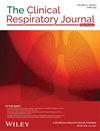Investigation on the Implementation of Mechanical Prophylaxis Procedures for Deep Venous Thrombosis in ICU in Southwest China: A Cross-Sectional Study
Abstract
Introduction
For ICU patients at high risk of bleeding or those already bleeding, it is recommended to use mechanical prophylaxis methods such as intermittent pneumatic compression (IPC), graduated compression stockings (GCS), or a venous foot pump (VFP).
Objective
This work aims to examine the implementation of mechanical prophylaxis measures for DVT in ICUs in Southwest China and provide a foundation for improving their adoption and effectiveness.
Method
In this study, a questionnaire developed by the researchers, based on existing literature, was used as the data collection tool. Following ethical approval, data were collected through self-administered questionnaires from 780 ICU nurses across 124 ICUs in Southwest China, between August and December 2022. Of these, 67.7% (84/124) were from Grade III hospitals, and 32.3% (40/124) were from Grade II hospitals. Additionally, 66.5% (519/780) of nurses had received training on DVT prophylaxis knowledge, whereas 33.5% (261/780) had not. The data were analyzed using the Statistical Package for the Social Sciences (SPSS) software, version 21.0, with descriptive statistics and Pearson chi-square tests applied for analysis.
Results
Statistically significant differences were observed among hospitals of different grades in several aspects, including the professional management team, dynamic assessments, risk assessment records, bedside warning signs, and implement sign-in communication for high-risk patients (p < 0.05). Statistically significant differences were also found between nurses who had received training on DVT prevention and those who had not, in terms of excluding related contraindications, conducting monthly inspections and preventive maintenance, having a specially assigned person for management, and providing clear precautions (p < 0.05). All ICUs were equipped with at least one type of mechanical prophylaxis equipment, but the proportion and duration of equipment use varied between hospitals. The top three factors hindering the implementation of mechanical prophylaxis were insufficient equipment, inadequate human resources, and failure to reset equipment in a timely manner after disuse.
Conclusion
Hospital grade, DVT prevention training, resource allocation for mechanical prophylaxis, and the implementation of prophylactic measures all influence the management of DVT mechanical prophylaxis in ICU patients. Moving forward, personalized DVT mechanical prophylaxis strategies should be tailored to the specific characteristics and needs of hospitals at different levels, with a focus on strengthening the establishment of systems, enhancing nurse training, improving equipment availability, and increasing equipment usage duration to improve the overall effectiveness of DVT prevention management.


 求助内容:
求助内容: 应助结果提醒方式:
应助结果提醒方式:


